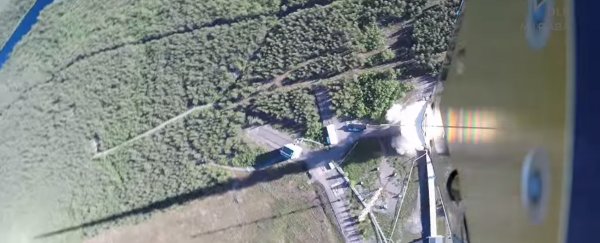Most of us have witnessed the incredible power of a rocket launch before, but we'd wager you've never seen one from this perspective. On 30 June 2015, Germany's space research agency DLR launched its scientific MAPHEUS-5 rocket from Sweden, and to offer a unique vantage point on the 6-minute expedition, they fitted a downward-facing camera to its nozzle. As you can see, the footage makes you feel like you're strapped to the side of the rocket for the entire ride, and it's nauseating, exhilarating, and spectacular all at the same time.
The video takes you through an edited version of the entire 15-minute experiment, which begins with a short countdown and a whole lot of fire. Before you know it, you're speeding into space at 2,000 metres per second and around Mach 6.5, eventually ascending to an altitude of 253 km. Don't miss the part around the 1:30 mark, when the rocket deploys its second stage.
The detail captured by the camera along the way, even as the rocket is spinning the world below into a kaleidoscopic swirl of green and blue, is pretty incredible, and definitely makes it worth any vertigo that might come with the dizzying speeds.
As DLR explains in a press release, MAPHEUS-5 took just 74 seconds to reach a state of microgravity, where it remained for 6 minutes - enough time to gather a wealth of data from three different experiments contained within the rocket. During that time, 2,500 steel balls were smashed into each other and filmed to find out more about how collisions occur in the absence of gravity.
Metal samples were also x-rayed to see whether results are different in space, and suspended metal balls were melted with a laser - the first time scientists had been able to do this in a weightless environment.
The rocket also contained thousands of cress plants, and will provide insight into how plants alter their molecular composition in microgravity. Previous research has shown that it takes only 20 seconds for plants to notice the absence of Earth's gravity and lose all sense of which way is up and which way is down.
All of these experiments provide important insight into how everyday occurrences, such as melting metals, performing x-rays, and growing plants for food and oxygen production, might be affected if humans ever colonised space. The data from MAPHEUS-5 are currently being analysed
Of course, what goes up must come down, and the camera also captured the descent from the rocket's perspective. The landing may not be as smooth as you'd like, but one thing's for sure, you can't beat that view.
